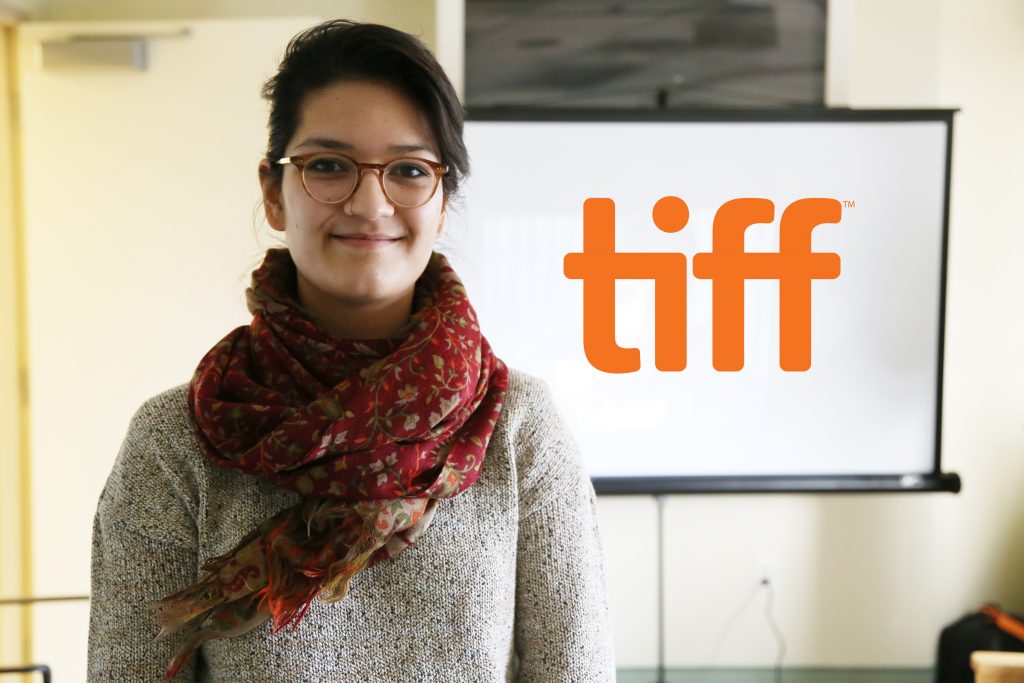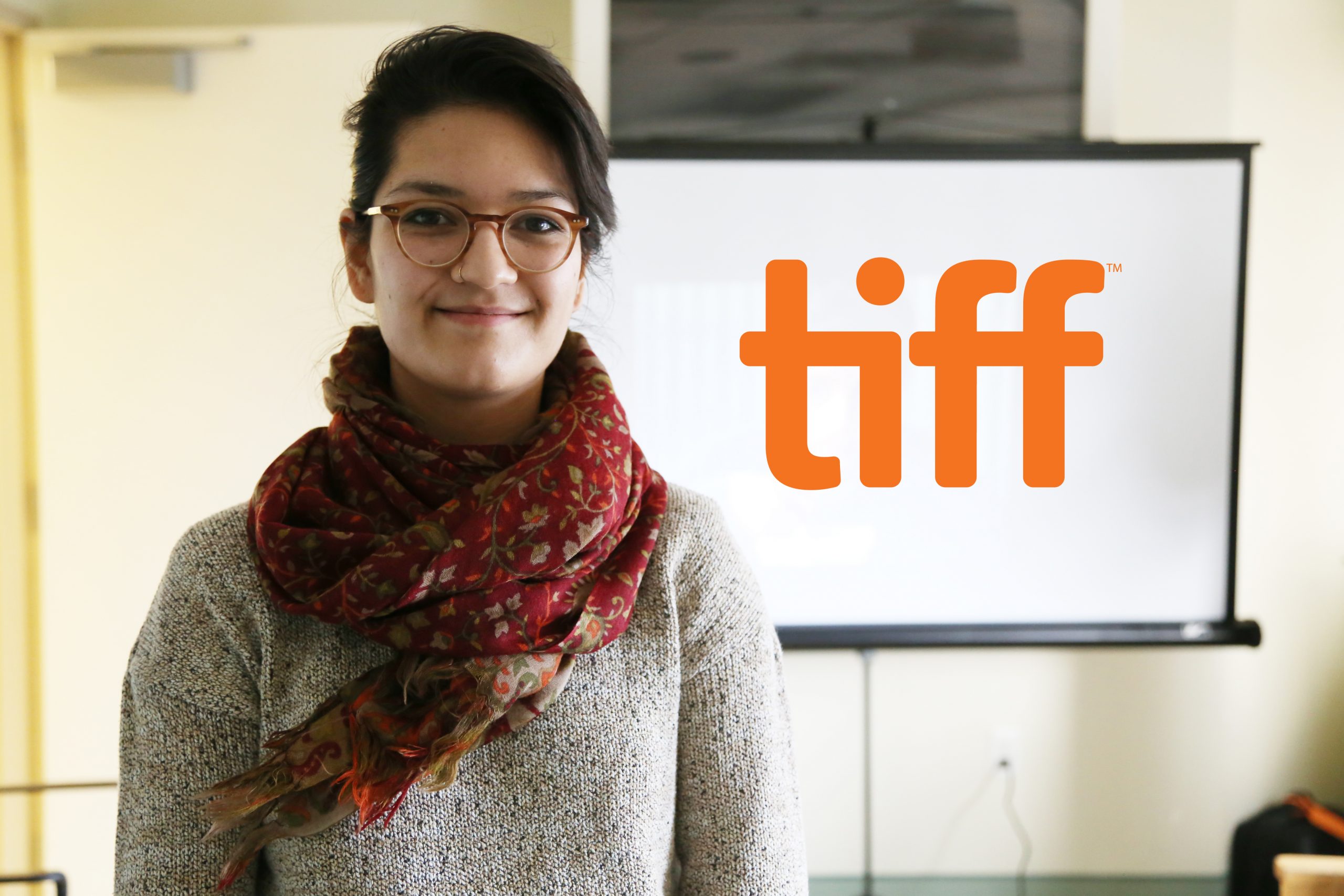TIFF partnership inspires community, recovery

 Filmmaker Haya Waseem screened her short film Shahzad as part of the Toronto International Film Festival last September. Earlier this month she showed it again to a smaller crowd on the seventh floor of St. Joseph’s Health Centre. Many of them had never met a filmmaker before, or had the opportunity to ask questions about the movie they had just seen. After the screenings, the crowd dispersed – back to their rooms; they were all clients in our inpatient mental health unit, receiving care and treatment for severe and persistent mental illness.
Filmmaker Haya Waseem screened her short film Shahzad as part of the Toronto International Film Festival last September. Earlier this month she showed it again to a smaller crowd on the seventh floor of St. Joseph’s Health Centre. Many of them had never met a filmmaker before, or had the opportunity to ask questions about the movie they had just seen. After the screenings, the crowd dispersed – back to their rooms; they were all clients in our inpatient mental health unit, receiving care and treatment for severe and persistent mental illness.
“This is a group of people who don’t necessarily have access to opportunities like this, even when they’re not in the hospital,” said Dr. Marika Younker, psychiatrist. “These sessions can have a profound effect on them because first of all TIFF is a name everyone has heard of so it makes our patients feel special that they’re coming in to do programming just for them, but also this provides an outlet for them, and a chance for them to interact with art.”
Haya’s visit was just one in a series made possible by a partnership between St. Joe’s and TIFF that sees filmmakers and industry experts visiting our clients on a monthly basis. In addition to film screenings, these visits include workshops that cover a range of film topics including claymation, sound effects, screenwriting and set design, providing an opportunity for clients to participate in hands-on activities and learn about the film industry. After the screening of Shahzad and two other short films, Haya participated in a facilitated discussion about her work, asking everyone how the movie made them feel. Several people in the group said her films made them cry, and they connected to the actors and their stories.
Laura, a client on the unit, said the experience of meeting Haya and watching her films had a significant impact on her.
“It makes me feel less embarrassed to be where I am in life right now,” she said. “I was sitting there thinking why are they here and why are they showing it to us and I kept thinking, well obviously we have something to offer and if they think we have something to offer maybe down the road I think I’ll have something to offer in life – I’m just not there yet.”
The visits from TIFF are open for clients to walk in and out of, and invite collaboration, creativity and dialogue. They can often have long-lasting effects.
“There’s a huge sense of accomplishment and some of our clients have mentioned how participating has sparked an interest on their part of pursuing some type of creative activity – they start to think, ‘Maybe I could become a film extra or write my own book or screenplay,’” said Dr. Younker. “Anytime someone finds a sense of meaning in their life is hugely significant.”
Staff members on the unit have noticed the sessions are especially significant for some clients.
“I know that the first one or two groups that TIFF ran we were all amazed at the turnout because there were people that at times wouldn’t even come out of their rooms to eat meals who would all of a sudden be in the group room interacting and socializing,” Dr. Younker said, “and often the clients that are the most challenging or who really struggle to express themselves verbally were able to engage in these types of hands-on activities and have an outlet where they were collaborating with other people and expressing themselves in a way they often don’t get.”
Elysse Leonard, Coordinator for TIFF’s Reel Comfort Programme, facilitated the extension of this film-based outreach programme at St. Joe’s in 2015. TIFF’s Reel Comfort Programme started in 2007 when a gap was identified —patients in psychiatric departments often had a lot of free time and not a lot to do, resulting in a lack of meaningful activity that encouraged recovery.
“Film is a great medium for expressing and confronting ideas, feelings, and experiences that might otherwise be difficult to communicate,” Leonard said. “It’s awe-inspiring and motivating to see firsthand film’s capacity to forge a sense of community within the hospital and to see individuals connect to something on-screen.”
After the films were done and the session about to wrap up, two clients hugged Haya and thanked her for sharing her work with them.
“I think it’s really neat that someone who’s put such time, research – writing it, shooting it, casting it, all of it – is sitting right there for me to pick his or her brain,” said Laura. “It brings it one step closer to actual day-to-day than just on the screen – that’s what it feels like, it’s more accessible.”
